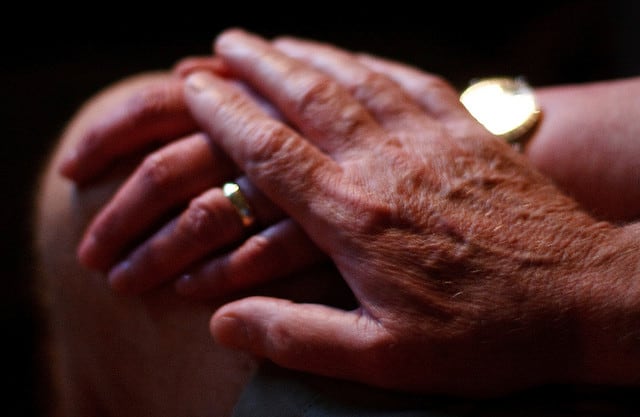
“It’s a word that gives us the courage – however difficult – to let go of the rock.”
Flickr Creative Commons / Dia
So after reading Jason Downer’s great piece about the movie, Inside Out, I had to go see it. Not only am I a huge fan of Pixar, but I admit that I’m also always in the mood for something that will pluck at my heartstrings. You can take the nodding of my friends’ heads with a slight grin as proof.
The story finds eleven-year-old, Riley, moving from the Midwest to San Francisco, and shows how her anthropomorphized emotions – led by Joy, but also include Sadness, Anger, Disgust, and Fear – are trying to cooperate in order to help young Riley be a joyful kid again as she moves through this difficult transition in her life (and notice what happens when both Joy and Sadness are missing from Headquarters…you’re just left with Fear, Disgust, and Anger – not a great combo!).
As Jason aptly put it, the film is an “emotional roller coaster.” And so, yes, you go all over the place, which I’m sure many – if not all! – of us can relate to. But there are several moments along this emotional journey that are like a brief resting period that gives pause, so you can notice what’s going on before the next, perhaps surprising turn.
One particular moment that stood out to me was when Riley’s childhood imaginary friend Bing Bong was feeling very sad. He had just learned that Riley was beginning to forget about things from her childhood…things from her memory were beginning to fade, which would now most certainly include him. Joy, always being so cheerful, positive, and upbeat, does everything she can to cheer him up. But nothing she tries works. Then something surprising (for me, at least!) happens. Sadness gently goes over to sit next to Bing Bong, and simply listens to him share how he’s feeling; she is completely present to him and doesn’t immediately try to fix the problem, like Joy had tried.
Sadness offers a hug and shoulder to cry on, and it works. And Joy is amazed, and also realizes that there’s something she’s being invited to pay attention to in the way Sadness was engaging Bing Bong. Sadness explains to Joy that she saw how sad Bing Bong was, and so she just wanted him to know that she cares by listening to him. Sadness wanted to listen and be present to Bing Bong’s sadness first. Perhaps she knew that engaging him that way would be more helpful for him in moving through the pain and sadness in a healthier way.
— — — — —
This brief, yet beautiful moment reminded me of an encounter I had earlier this year in Manila. I had been working this past year in the Philippines with Casa Bayanihan, University of San Francisco’s alternative study abroad program. In addition to working with university students, I had the opportunity to accompany families in a very poor and marginalized part of Manila through an organization called Tulay ng Kabataan (“Bridge for Children”). I would help the teachers with whatever I could in the small classroom they had in the middle of the community. And I had a moment where I saw a child, five-year-old Hannah, crying, and felt her longing to be recognized and held in her pain.
The staff and I had just finished lunch, so I walked outside of the center to see what games the kids were playing. When I looked over, I saw Hannah (who was always the very meek, sweet, and more quiet one) sobbing as she was standing behind her older sister, who was playing a game with some of the other kids. I saw that Hannah was also holding a huge rock in her hand, ready at any moment to smash it over her sister’s head. I didn’t see what happened to Hannah to provoke her, but the scene was that of a volcanic eruption. As this was going on, many of the other kids were practicing a new dance and song routine. But Hannah just stood behind her sister, crying and holding the rock with a gripping intensity. I knew that the kids there could be fairly tough with each other, but this was a whole new ballgame.
What was confusing to me, though, was how Hannah’s sister turned around to see Hannah crying and holding the rock aimed at her, but did not seem scared at all – she didn’t even flinch. The other kids noticed, as well, but no one was doing anything about it. No one was responding to Hannah.
All of this was happening so quickly, and my immediate inclination was to run over and solve the problem (à la Joy from the film) by taking the rock from her hand and then trying to cheer her up, mostly out of my own sense of feeling uncomfortable with the whole situation. But before I could move I made eye contact with Hannah, and we just stared at each other.
It was one of those moments where everything around us seemed to stop. I felt connected to her in a way, as if I could feel her sharing her whole vulnerable self in that moment. I felt like I was likewise baring my whole self to her through an expression of loving sadness and compassion, which I hope she felt. I couldn’t imagine what pain she was feeling to get her to that point. She probably just wanted others to notice her pain.
Even still, I could also see how she didn’t have it in her to actually throw the rock. I was nevertheless incredibly nervous about the whole situation, and needed to respond. Rather than trying to fix things with a “come on and cheer up” attitude, I calmly walked over and kneeled down beside her, gently held the rock with her with one of my hands, and rubbed her shoulder softly until she let go of the rock…it seemed like an eternity.
— — — — —
I don’t think Hannah’s pain was taken away at that moment by any means, or even began to completely heal shortly thereafter. It was one of those moments where I asked, “How did it come to this for you?” And then all I had to do was look around, recall the many difficult conversations I had with the folks in the community about life there, and then I could more easily get a glimpse as to how one might find themselves responding with such sadness or anger. But a child, all of five-years-old? And beneath that anger, I could feel the pain and anguish. It felt like God was calling from that place. “Do you notice me here? Will you be with me in this place, and hold this pain with me?”
I don’t know if my default fix-the-problem-attitude would have worked. If I chose that option, I think she might have heard: “How you’re feeling right now is not important. You need to feel differently.” She would have heard me not acknowledging how she was feeling, but instead, my own need to “fix” her so I could feel better.
But – and this is the reminder I need to hear over and over – it’s not about me. It’s about the unique and unrepeatable gift in front of me. She wanted to be acknowledged, to be embraced; not fixed.
And I think a lot of the time that, as relational beings, we both desire and need to be recognized for the truth of who we are and how we’re doing, to gift ourselves to each other with tender care, and not just when we’re feeling joyful, but equally (if not more so) when we’re sad or in pain. To escape immediately from our personal suffering (or someone else’s), out of fear of discomfort or denial, to immediate joy is to try and make our reality something that it’s not – it’s hardly sufficient for doing the work of deeper healing.
The deeper invitation was to literally hold the pain with her. It was an invitation to overcome my discomfort and to hold hers together, trusting the truth of a loving presence that holds us close through our suffering. It’s an invitation to be present to someone even when we don’t know what to say or do. After all, being at a loss for words might be comforting to the one suffering, who also feels that way. And, it’s an invitation to never forget that love, to live out of it, and let that grace guide our lives.
— — — — —
As I held that rock with Hannah, I could feel my heart breaking open and expanding. And somehow through that could also feel God holding the both of us, wanting that divine life to live in us, in the depths of our reality, and have the last word. It’s a word that comes to us in our human reality: fragile and vulnerable, hearts in need of a healing presence and love. It’s a word that meets us wherever we may be, that longs to be close to us, for us to know of that intimate, tender love and care, which seeks to listen and hold us first.
It’s a word of love that says,
“I am with you…
I am for you…
We will go through this together…
You are not alone.”
It’s a word that gives us the courage – however difficult – to let go of the rock.


